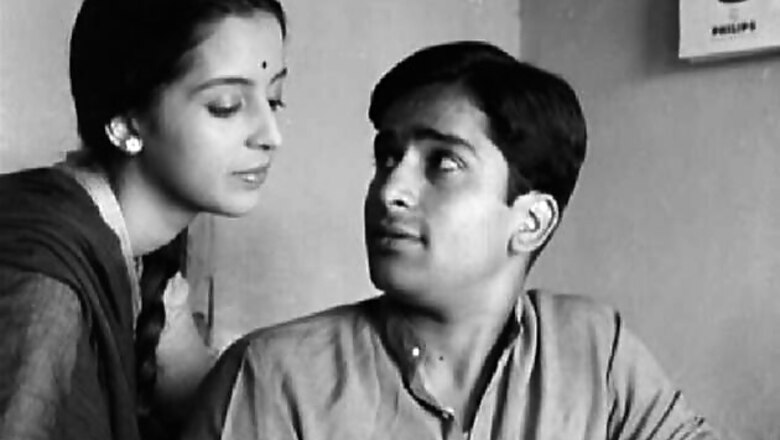
views
New Delhi: The mainstream Indian filmmaking has always enjoyed the abundance of people whose sensibilities find an inspiration in the western way of thinking. It was inevitable because the art of cinema was developed in the West and when Indians started to purchase equipment they also bought the ideas.
Filmmaking was always a costly art and during the British Raj only few Indians had the privilege of taking up cinema as their career. Plus the western pioneers of cinema were clear about using the medium as a source of amusement and it could have taken place in their native tongue only, and whenever anyone else went for the same art they had to understand the tricks of the trade in the original language.
Such a situation had given birth to the trend of English films but it was not the talkie era yet, so the films with English titles or credits were considered as the initial English films.
However, there was a problem. Indian films were supposed to cater to the indigenous audience along with the upper strata of society, which consisted foreign educated people and families from Britain, so some filmmakers went for the English translation of the titles. 'Bherat Ferat' became 'England Returned' (DG Ganguly) and 'Savkari Pash' was rechristened as 'Indian Shylock' (Baburao).
It was 1898 when a film company came to India and showcased their film 'The Flower of Persia' in Calcutta. The screening was followed by the play 'The Flower of Persia'. Hiralal Sen borrowed the camera from the owners of the film company and shot a dance sequence from the stage play, and thus started the trend of films with English titles. Later, he bought cameras from London to start the Royal Bioscope Company.
Around 1910, short filmmakers came up with projects such as 'Indian Life And Scenes' (Hiralal Sen) and 'Dancing of Indian Nautch Girls', some even attempted to showcase the technical aspects of filmmaking, Dadasaheb was also one of them. They were clearly eyeing the future and knew that the technological advancements should be taken care of.
Then came Himanshu Rai's 'The Light of Asia' (1925). It had two names, 'Prem Sanyas' in Hindi and 'Die Leuchte Asiens' in German. The film was directed by Franz Osten and Himansu Rai, and was based on Edwin Arnold's homonymous book. 'The Light of Asia' propagated the theory of Buddhism.
Osten and Rai united once again in 1929 on 'A Throw of Dice' or 'Prapancha Pash'. The Mahabharata was the inspiration of 'Prapancha Pash'.
Khan Bahadur Ardeshir Irani was the next to follow the suit, he made the English version of his film 'Noor Jehan' in early 1930s. Himanshu Rai's 'Karma' (1933) was also made in English, but it was Jamshed Boman Homi Wadia who is credited to be the maker of the first entirely Indian English film 'The Court Dancer' (Raj Nartaki, 1941).
By 1946, Indian films began to leave impression outside India, 'Neecha Nagar' (Chetan Anand, 1946) was selected for several prestigious film festivals across the globe. Indian cinema was coming in contact with the world cinema and the basic platform for crossover films was taking shape.
V Shantaram released his hugely acclaimed film 'Dr Kotnis Ki Amar Kahani' by the name 'The Journey of Dr Kotnis' in 1946. Similarly, Sohrab Modi's 'Jhansi Ki Rani' (1956) was translated into 'The Tiger and the Flame'. A film called 'Shehanshah' was also released with an English name.
Modern Theatres, a respected name in filmmaking, joined hands with an American Film company to produce the first English film in South India. It was called 'The Jungle' (1952) and it had Cesar Romero, Rod Cameron and Mary Windsor in the lead roles.
Shashi Kapoor was the first established mainstream Indian actor who showed a keen interest in doing crossover films. Merchant Ivory Productions (Producer - Ismail Merchant, Director - James Ivory) surfaced with the idea of 'The Householder' (1963) and Shashi Kapoor promised to do the film. It was about a teacher Prem and his relationship with his wife (Leela Naidu) and his mother (Durga Khote).
'The Householder' proved to be a huge boost for crossover-English films. 'Shakespeare Wallah' (1965), 'Guru' (1969), 'Bombay Talkie' (1970), 'Roseland' (1977) and many more films, Merchant Ivory Productions kept delivering sensible and relevant films. Last time their names were featured in the credits of 2007 film 'Before the Rains' (Director: Santosh Sivan).
When the parallel cinema movement started in India, noted actress Aparna Sen decided to turn director with '36 Chowringhee Lane'. The alternate cinema movement was at its zenith and the critical success of '36 Chowringhee Lane' inspired other filmmakers to try their hands in English. As a result films like 'Massey Sahib' (1985) gained fame among the urban audiences at least.
It was a time when Indian brand of spirituality had won the most of Europe and America and the international markets were opening up for Indian products, but somehow Indian filmmakers couldn't break the shackles. The genre had to wait till 1994 when Dev Benegal's 'English, August' revived it.
From here on, Indian English films saw the emergence of the talented youth brigade which is trying its best to make the tradition of English films survive and flourish.
People like Nagesh Kukunoor, Aparna Sen, Revathy, Dev Benegal, Homi Adjania and VK Prakash have contributed to keep the momentum going for English films and the new generation is likely to carry forward the legacy.
####




















Comments
0 comment